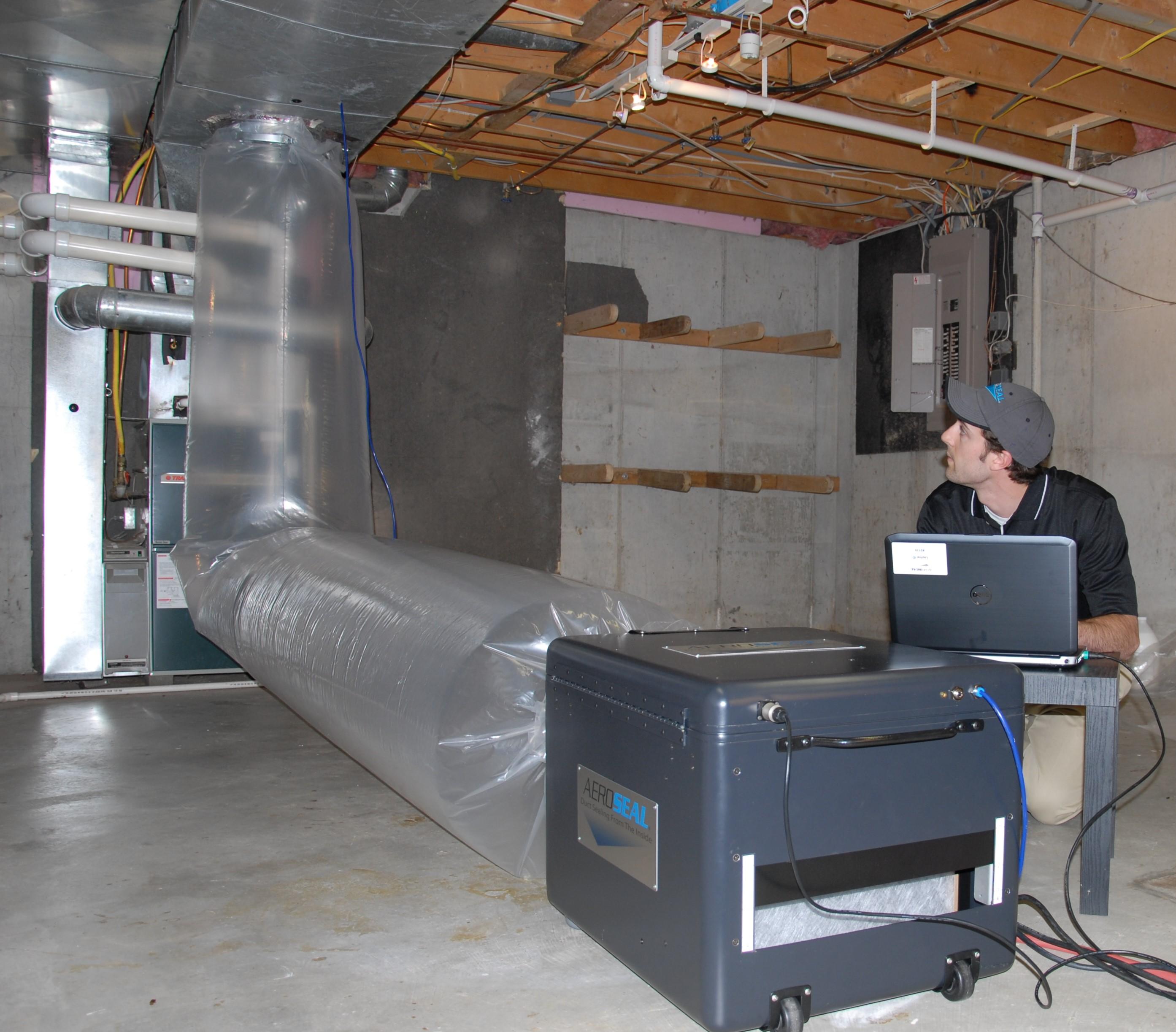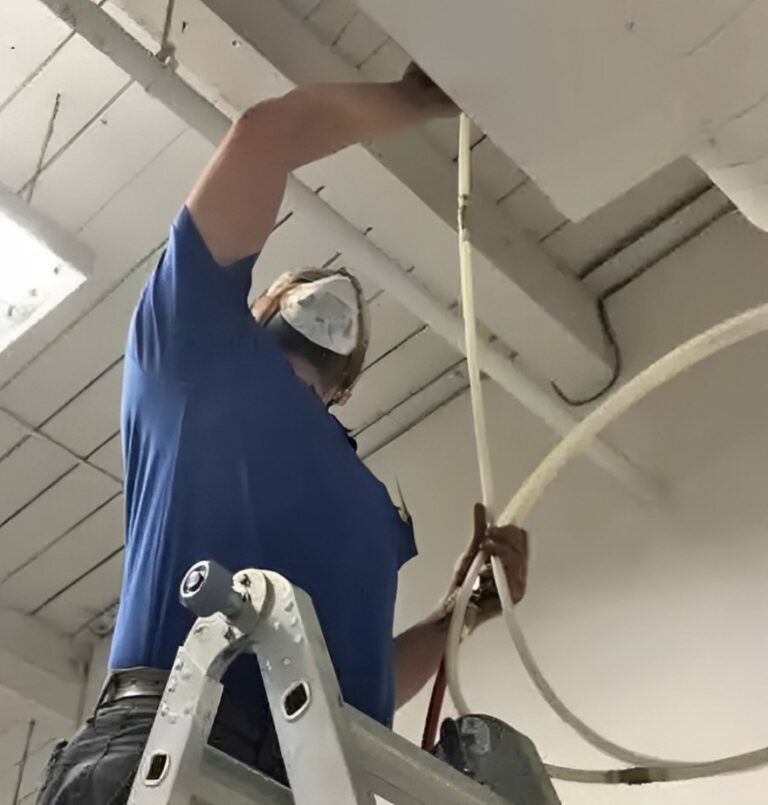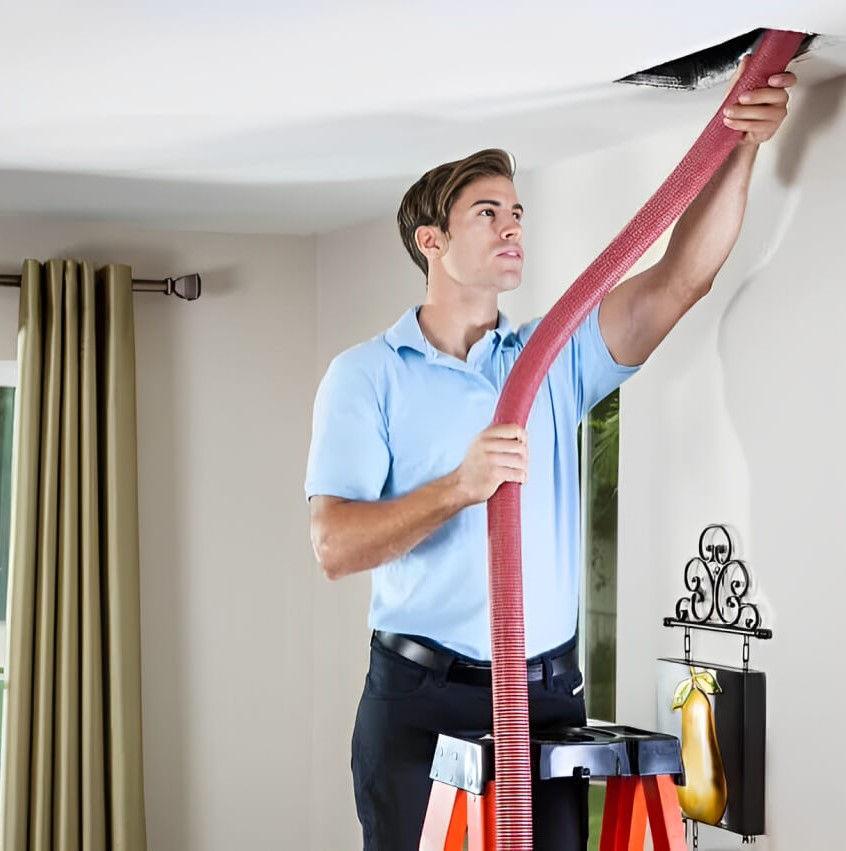How to Properly Install UV Lights in HVAC Systems
One of the major concerns of every HVAC system is maintenance. Proper maintenance is the key to sustaining and improving the efficiency of your system. However, even when you clean your system, it is still important to disinfect it to neutralize allergens like mold that are harmful to your health.
UV lights kill mold spores, airborne bacteria, and viruses, making them an important component in HVAC systems. However, most people don’t know how to install UV lights in HVAC systems.
This article will serve as a step-by-step guide to installing UV lights in your HVAC systems.
Key Takeaways
- Maintenance is key to HVAC efficiency, and UV lights are essential for disinfection, neutralizing allergens like mold, bacteria, and viruses. They disrupt pathogens’ DNA, improving indoor air quality. They can be used for coil sterilization or air sterilization depending on the desired outcome.
- To install UV light in HVAC, turn off power, choose the right location, follow the manufacturer’s instructions for mounting and wiring, test the light, secure loose wires, and reassemble the system.
- Regularly clean UV lamps, inspect for wear, avoid direct exposure, and ensure proper installation to mitigate risks like ozone buildup.
- Hire an experienced and certified HVAC expert to install UV lights in your HVAC system the right way. Ties360 will thoroughly inspect your HVAC system and install the right UV lights to give you good air quality all year round. Contact us for a quote today!
Understanding UV Lights and HVAC systems
UV (Ultraviolet) lights play an important role in HVAC systems and are usually installed in ductwork or air handlers. These lights disrupt the DNA of specific bacteria and germs when they absorb the rays. As a result, they can stop viruses, molds and spores from reproducing and causing serious health concerns. UV lights help to improve overall air quality, making sure that your indoor air is clean and fresh.
There are two types of UV lights used for HVAC systems: coil or air sterilization:
Coil Sterilization
These UV lights are usually mounted on air handlers close to the evaporator coil. Coil sterilization or UV-C lights can be used day and night to sterilize your system as they radiate through it.
Air sterilization
Here, UV lights are installed in the return ducts and connected to the HVAC system. They are activated when your system is turned on and sterilizes the air before it is sucked into the HVAC system. These lights also sterilize some components in the HVAC system close to the purifier.
UV lights are commonly used in In-Duct Airstream disinfection and Component Surface sterilization. These two methods depend on your desired outcome of the UV light.
In-Duct airstream disinfection
This method is used to disinfect an airstream within a building or a ventilation system. It is most effective for killing airborne pathogens and fungi that enter the airstream.
Component surface sterilization
This type of treatment prevents and destroys microbes on the air coils and surrounding surfaces. However, it is least effective at killing bacteria that grow within the coils or on surfaces that UV light can’t reach.
Step-by-step guide to install UV lights HVAC systems
When installing UV lights in your HVAC system, you need the proper set of tools to make the process easier:
- UV-C light kit (UV lamp, ballast, and mounting tools)
- Electrical tape
- Wire connectors
- Screwdrivers
- Safety gloves
- Electrical power tester
- Drill and drill bits
Here is a step-by-step guide on how to install UV light in your HVAC system:
Step 1
Turn off the HVAC system at the circuit breaker or disconnect the switch. This is to ensure your safety before installation.
Step 2
Choose an ideal location to install the UV light. Common places to install these lights are the air handler, evaporator coil, inside the return air duct, and above the evaporator coil. The location you choose can depend on your system’s design.
Step 3
Follow the manufacturer’s instructions to mount the UV lamp and ballast properly. Use all the screws and hardware to couple the lights.
Step 4
Connect the UV lamp and ballast to your HVAC system’s electrical supply. The ballast will have a guide to tell you which wires should be connected. There are usually two power wires (Black and white) and a ground wire (green or bare). Make sure you follow the manufacturer’s guide included in the kit. Disconnect the power supply wires from the HVAC unit and connect them to the ballast wires. Ground the UV system according to your local electrical codes.
Step 5
Before closing the system, turn on the power supply to test the UV light and ensure it works properly.
Step 6
Use duct tape to hold every loose wire and ensure it does not block airflow or any moving parts of the HVAC system.
Step 7
Reassemble any parts of the HVAC, seal gaps, and prevent leakage with duct tape or another suitable material.
Step 8
Turn on the power at the circuit breaker.
Step 9
Check the UV lamp regularly to ensure it is working and keep it free from dust.
Benefits of installing UV lights in HVAC Systems
UV lights are beneficial to your HVAC system in many ways. Here are some of the ways UV lights can improve your indoor air quality:
Prevents bacterial and mildew growth
Bacterial and mildew growth is a cause for concern because moisture and air constantly pass through the system. A UV light keeps your system clean and free from allergens and gives you cleaner air. The cleaner your components are, the better your airflow. When there’s less bacterial growth, you can go longer periods without unplanned maintenance.
Energy savings
When your system is clean, it works smoothly and does not require more energy to work. UV lights save energy by keeping things in order while creating a smaller carbon footprint.
Increased efficiency
Accumulated dirt can cause your system to malfunction. By removing contaminants with UV lights, you can improve your system’s lifespan and efficiency. UV lights break down organic matter like pollen and mold, which can obstruct smooth function.
Safety and maintenance tips
Proper maintenance increases the lifespan and effectiveness of your UV light system. Here are some tips.
- Clean the UV lamp every six months, depending on the buildup.
- Turn off the power before cleaning. Use a soft cloth and cleaning solution to remove dirt properly.
- Always watch for signs of wear on the lamp and other components. If there are any cracks, you should replace the lamp to avoid direct exposure to harmful UV radiation.
- Always avoid direct exposure to the eyes and skin. Wear protective gloves and eyewear, and avoid looking directly at the light while testing.
- Make sure you install UV lights properly to avoid ozone buildup and reduce the risk of skin cancer.
FAQs
How do you size UV light for HVAC?
Multiply your airflow rate by 12. This will give you the least UV light intensity for your system.
What UV level is best?
The UV light should be between 0 and 2, which means there is a low danger. A 3 to 5 bears moderate risk from exposure.
Wrapping Up
UV lights are an important component of your HVAC system. By obeying the proper precautions, UV lights can be a powerful tool for disinfection, mold prevention and sustenance of the entire system.
For proper installation of UV lights in your HVAC, contact ties360 . With over 20 years of experience and trained experts, you can be assured of properly installed UV lights that will serve you and your home for a long time.






